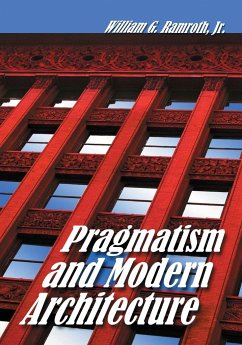Architecture is not origami. A drawing cannot be folded in a clever way to make a real building. A picture of a building is no more architecture than a drawing of a sculpture is the sculpture. To exist, the building must be built. A building is the outcome of an idea. Pragmatism is the philosophy that connects an idea with its result. It measures the success of the idea by its its function, its appearance and its contribution to the environment in which it exists. This work examines the relationship between the methods of modern architecture and the philosophy of pragmatism. It discusses how modern architecture and pragmatism developed during the nineteenth century and offers examples of pragmatism within the work and writings of predominant practitioners and theorists of modern architecture.







